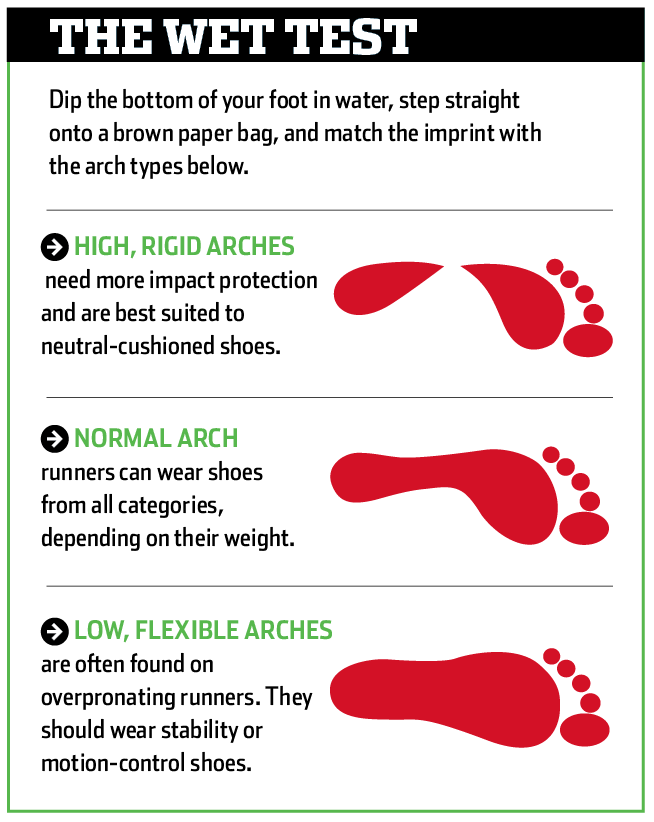Choose Your Shoe
There’s no such thing as the ‘best’ shoe – everyone has different needs. Biomechanics, body weight, the surfaces you run on and the shape of your feet mean one person’s ideal is someone else’s nightmare.
Here’s how to avoid the pitfalls:

Shoes can be divided into four main categories – neutral cushioned, motion-control, stability and performance – which, for all the bright colours and crazily named hi-tech features, are basically designed to suit different people’s biomechanical needs.
The first step in finding your ideal shoe needs is to try our ‘wet test’ (pictured, right). This works on the basis that the shape of your wet footprint roughly correlates with the amount of stability you might need in your shoe. ‘Roughly’ is the key word here, though: it’s a handy starting point, but no more than that.
Second, read the section on shoe categories for a greater understanding of the four types on offer. And once you’ve done that, and got at least some idea of what type of shoe will suit you best, visit a biomechanics expert – or, more realistically, an experienced specialist running shop – to get a ‘gait analysis’ done. This is a more scientifically advanced version of the wet test, in which a specialist will look at how your foot strikes the ground to help choose a shoe with the right levels of support.
One fit never fits all.
With the right advice, most runners will find it relatively easy to find a shoe that is at least close to ideal.
Once you’ve determined which category you fall into, you have a wide range of shoes to choose from. All you have to do is decide which shoe within your category provides the best comfort, fit and performance for your needs – although that can be a daunting prospect for a beginner.
Try out a range of shoes, listen to the advice and don’t rush into a decision if you’re unsure.
Some people, however, have problems finding a comfortable shoe at all. A minority of runners have very specific needs, which can make shoe buying an altogether more frustrating business. If you’re a forefoot striker, a heel striker, a underpronater, wear orthotics, or have very wide or very narrow feet, you’re in the minority. Read more on what shoe you should wear, here.